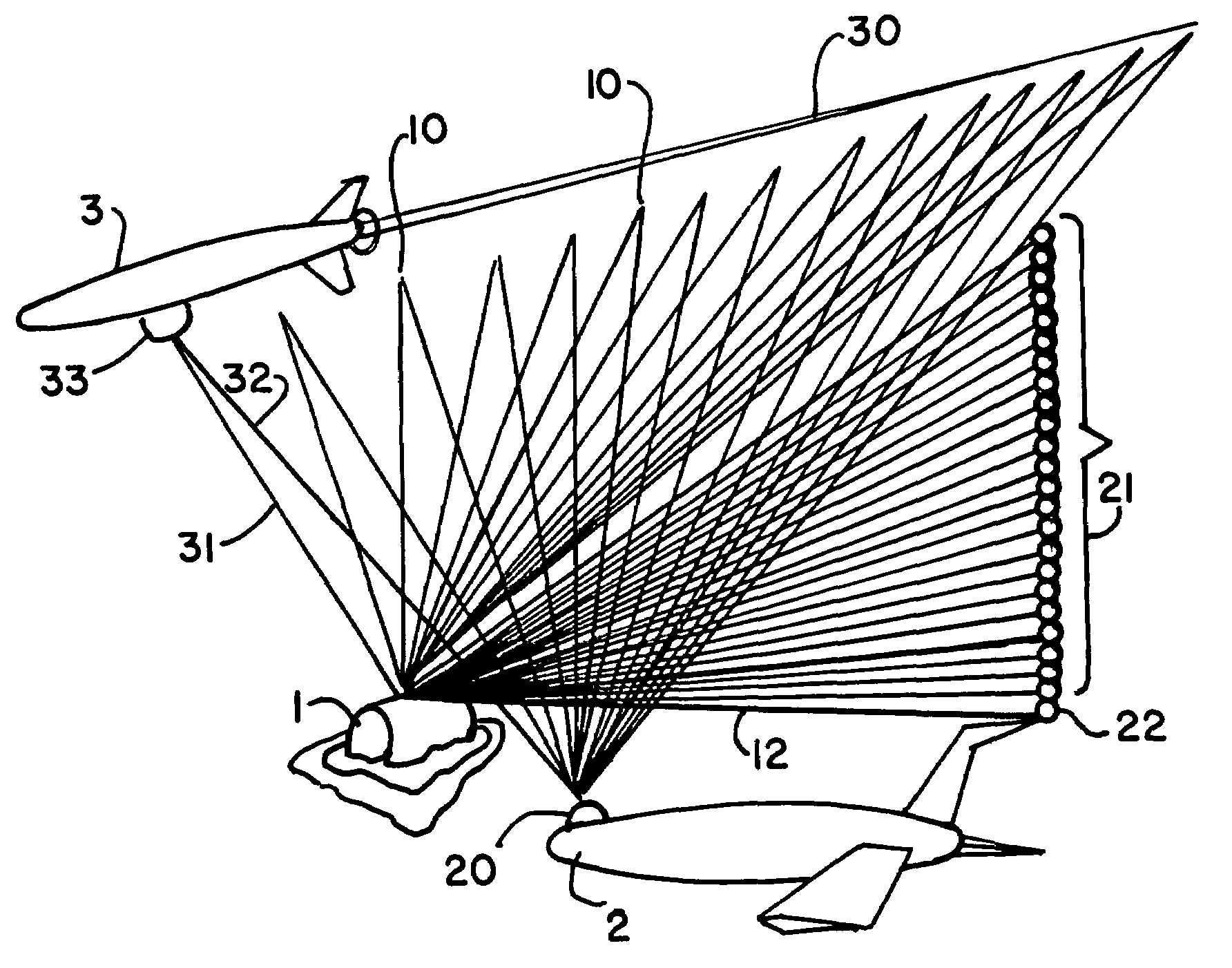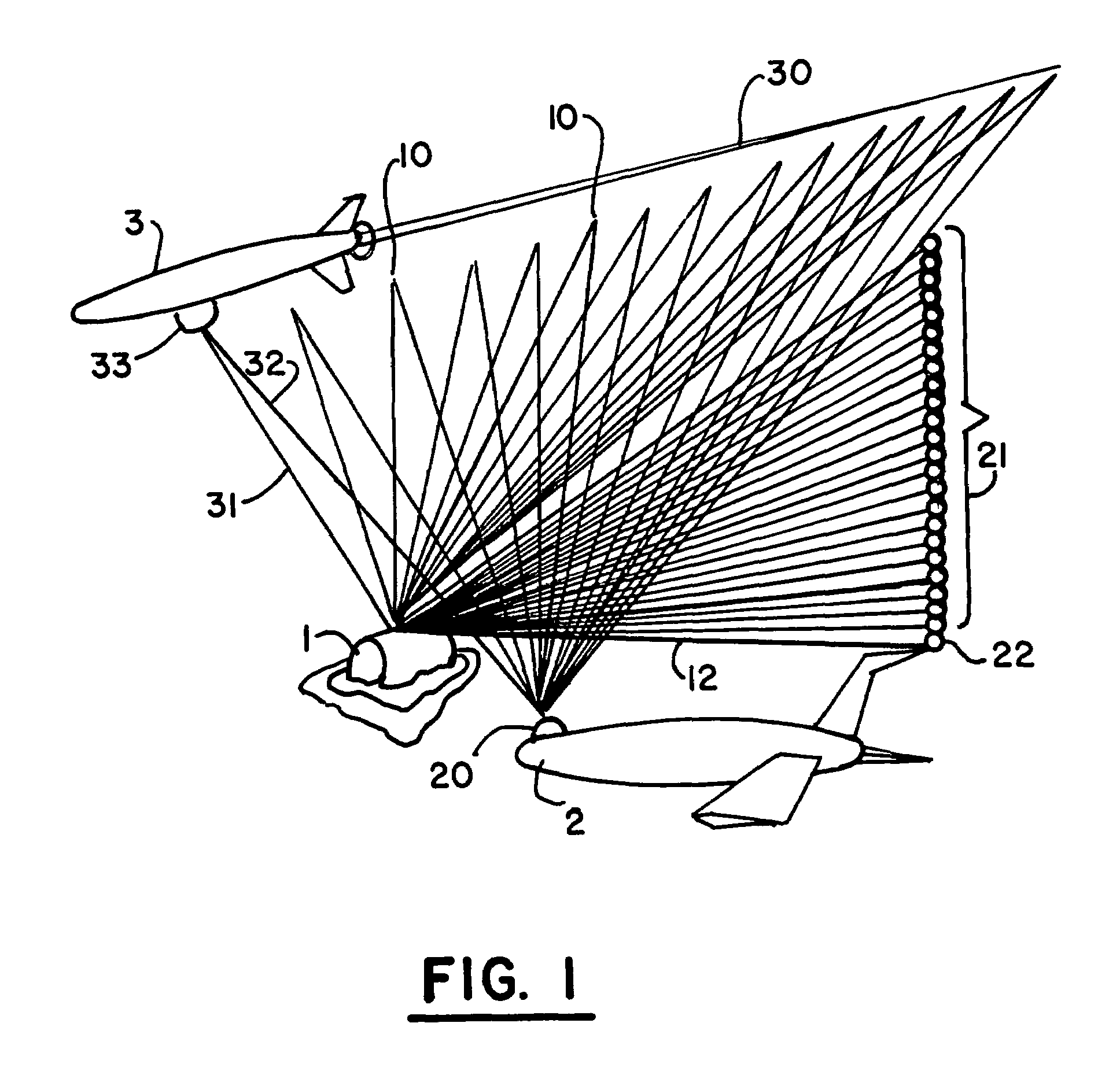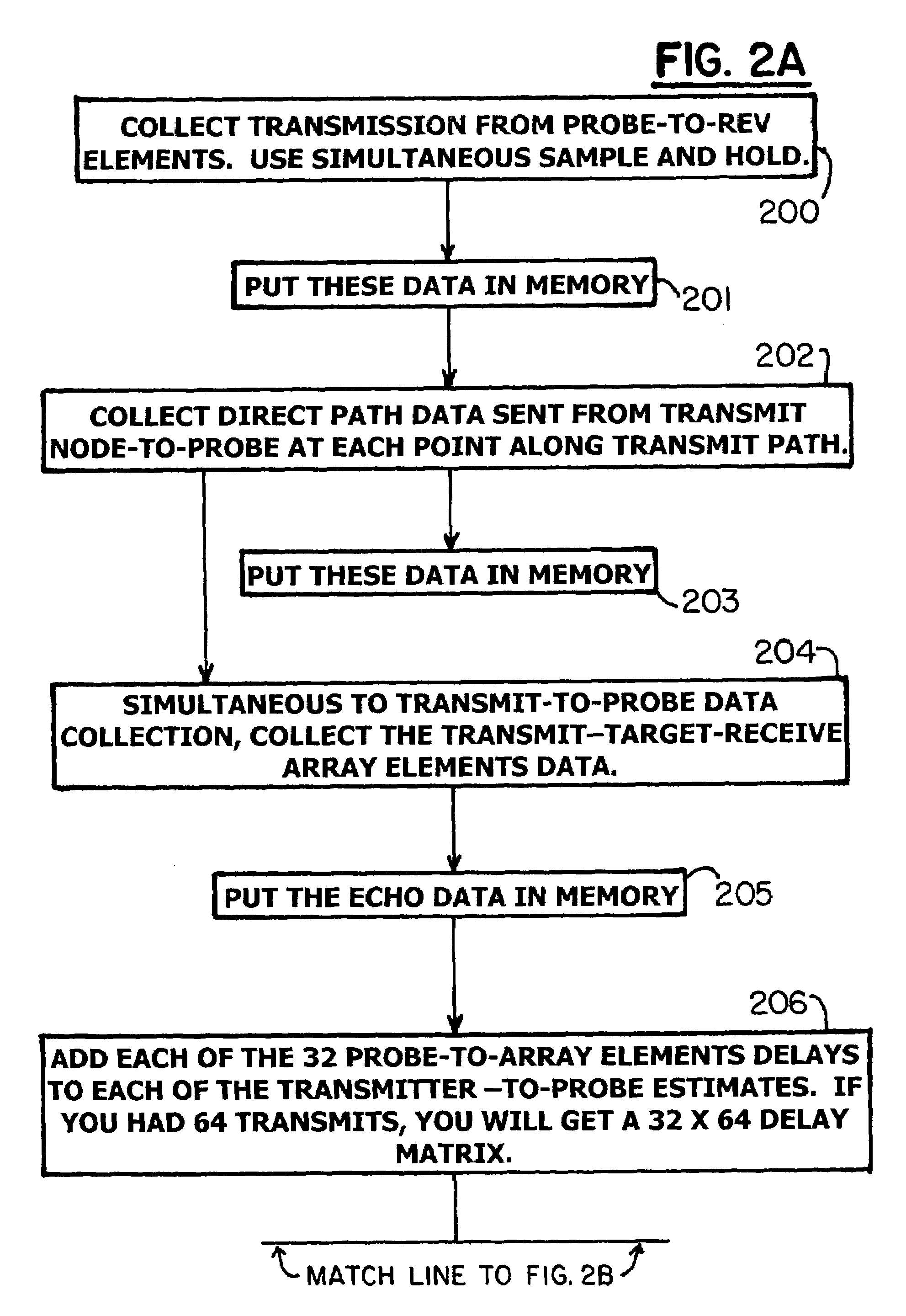Dual unit eidetic topographer
a topographer and dual-unit technology, applied in the field of underwater sonar detection systems using multiple vessels, can solve the problems of affecting the operation efficiency of manned detection systems in close proximity with activated objects of interest, affecting the accuracy of eidetic topography, etc., to achieve the effect of improving the efficiency of operation
- Summary
- Abstract
- Description
- Claims
- Application Information
AI Technical Summary
Benefits of technology
Problems solved by technology
Method used
Image
Examples
Embodiment Construction
[0038]The present invention is directed to an adjunct for a wide-range of underwater detection systems. In particular, the present invention focuses on the close identification and imaging of a particular object of interest that has already been located by conventional wide-range (generally, low frequency) underwater detection systems.
[0039]Once such an object of interest has been located, the present invention is carried out by two, preferably unmanned, satellite vessels. Such vessels are smaller and much less expensive than manned vessels. Further, such unmanned vessels can be deployed in larger numbers, and avoid danger to personnel. Because a substantial number of vessels can be deployed over a wide area, objects of interest can be identified and imaged much more quickly than with more complex conventional systems. This is especially crucial in any situation where time is of the essence, such as combat or rescue operations.
[0040]The present invention is utilized in conjunction w...
PUM
 Login to View More
Login to View More Abstract
Description
Claims
Application Information
 Login to View More
Login to View More - R&D
- Intellectual Property
- Life Sciences
- Materials
- Tech Scout
- Unparalleled Data Quality
- Higher Quality Content
- 60% Fewer Hallucinations
Browse by: Latest US Patents, China's latest patents, Technical Efficacy Thesaurus, Application Domain, Technology Topic, Popular Technical Reports.
© 2025 PatSnap. All rights reserved.Legal|Privacy policy|Modern Slavery Act Transparency Statement|Sitemap|About US| Contact US: help@patsnap.com



